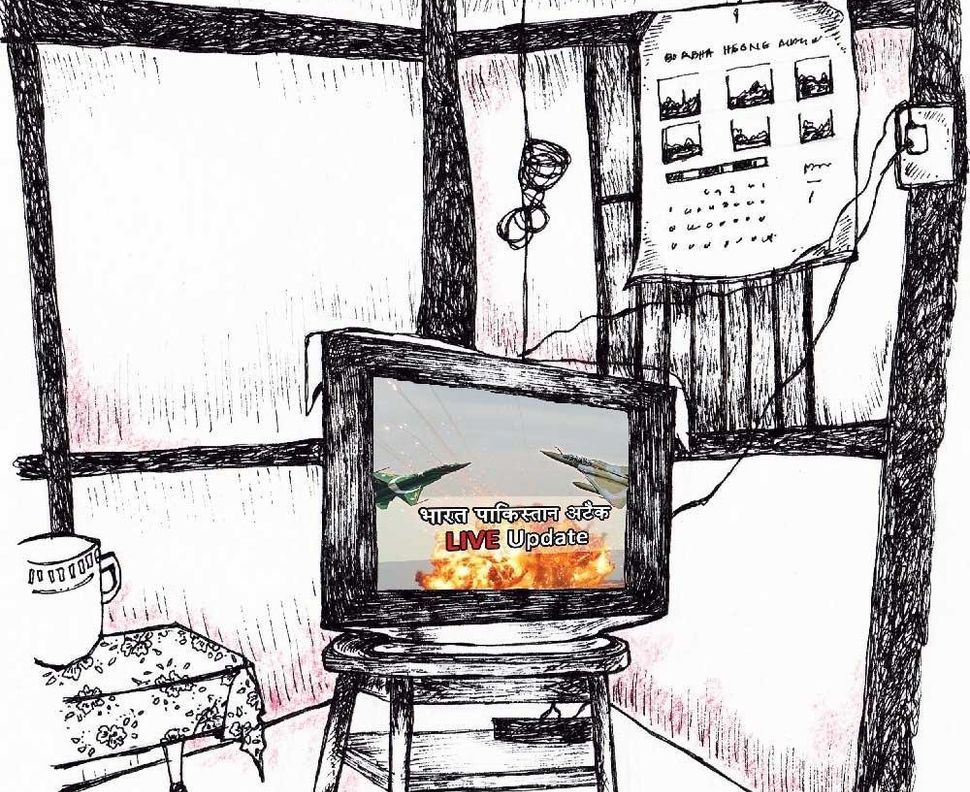
“We appeal to the countrymen, do not trust these videos and do not forward them, because this is Pakistan-sponsored propaganda in itself, and we should not become a part of it’’
-Doordarshan broadcaster
War is enthralling and at our fingertips. As long at the network holds, the India-Pakistan standoff is in our hands, satisfying our need for drama and emotion and patriotism.
But has war always been so intimate a companion?
Kargil, they say, was India’s first televised war. But it did not reach so far. The internet and the smartphone has allowed the 2019 conflict to traverse further, through Facebook timelines and WhatsApp messages, and a larger set of vociferous channels.
When Indian and Pakistani troops fought in the icy wastes along the Line of Control back in the summer of 1999, many of the militant groups here in Bodoland were fighting their own battles with the Indian state. The ceasefires and peace deals were not in place; ethnic riots raged.
Twenty years later, a new war brings forth new dynamics.
After decades of counter-insurgency and years of manufactured, uncertain peace, the war enters lives and homes here differently. After enduring decades of living beside paramilitary troops and the Indian army, and enduring the violent counterinsurgency that follows in their wake, these villages in Bodoland have started sending their young men to fight. One of the Central Reserve Police Force jawans killed in the Pulwama attack in February this year was Maneswar Basumatary, a Bodo from Udalguri.
After the Pulwama bombing, the Bodoland chief Hagrama Mohilary publicly offered to send 300-500 Bodo youths from BTAD to fight in Jammu and Kashmir. Incidentally, Hagrama himself fought against the Indian security forces in his days as an underground leader of the armed group Bodo Liberation Tigers until the ceasefire agreement with the Government of India in 2000.
How did a region go from fearing and fighting the Indian armed forces to valorizing them in a matter of decades? This is perhaps a story embedded within the dynamic of counter insurgency and conflict.
When the February 2019 war arrived though, it was through smart phones and television channels. The war was here, and with it, a firming of the grip of the nation state and Indian nationalism.
Episode 1
The air force pilot Abhinandan Varthaman was taken into Pakistani custody after he bailed out on the wrong side of the line of control. Within a few hours, amidst silence from the Indian government, videos of his capture were released on Twitter by the Pakistan Army.
The Indian Government directed YouTube to remove the videos that showed the IAF pilot’s capture in Pakistan. But by then, the videos had been viewed millions of times across various websites. Potent as television news is in the times of crisis in shaping opinions and stroking nationalistic fervor, this time, the narrative shifted as much to the smart phone’s mediation of information.


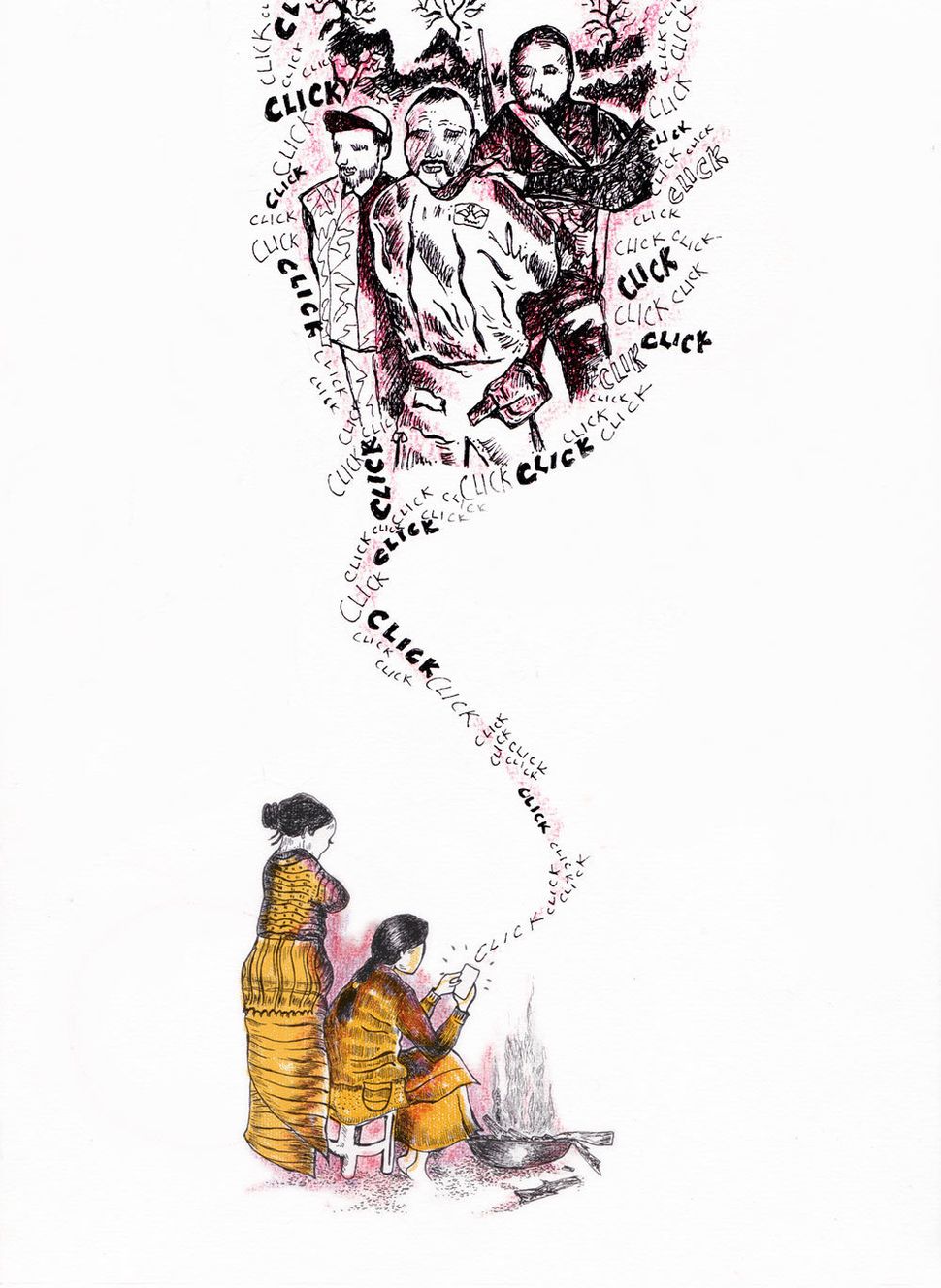
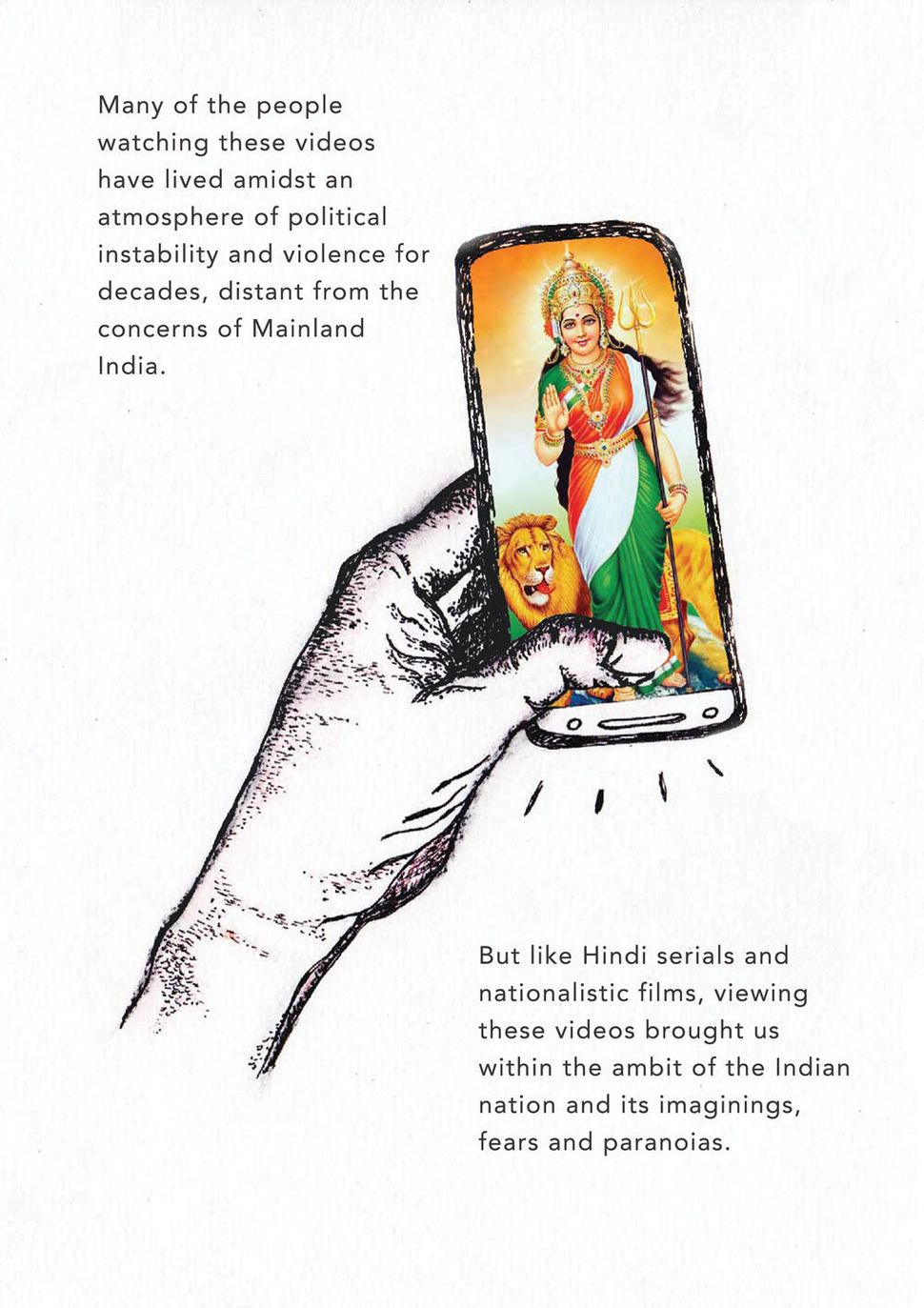
Episode 2
For others, like the Koch household, there is an urgency and tension in all this talk of war. The family has been up nights watching the news of the war on television channels like Zee and India TV, even though they struggle with following Hindi. This is one of many families with young men in the various army and paramilitary battalions. In their village of Rabhapara, which has Bodo and Koch Rabha families, the first people to join the security forces did so in the 1990s. Now there are more men who are in the army and paramilitary forces than, say, teachers in the village. Eight young men have just come back from trials for the territorial army.
It is not unusual to have militants or former militants and members of the armed forces in the same village, sometimes in the same extended family. These villages are close to the Reserve forests which have been the traditional refuge of armed groups, while the Pathgaon and Serphanguri markets still have the CRPF and SSB on patrol.
Manoj’s brother-in-law joined the BSF in 2014 and has been posted in Kashmir since 2017. He is in the frontlines somewhere along the border, they do not know where. The brother-in-law is not allowed a mobile but has been making occasional contact to say they are in the midst of firing across the LoC, not active combat but constant firing at the border.
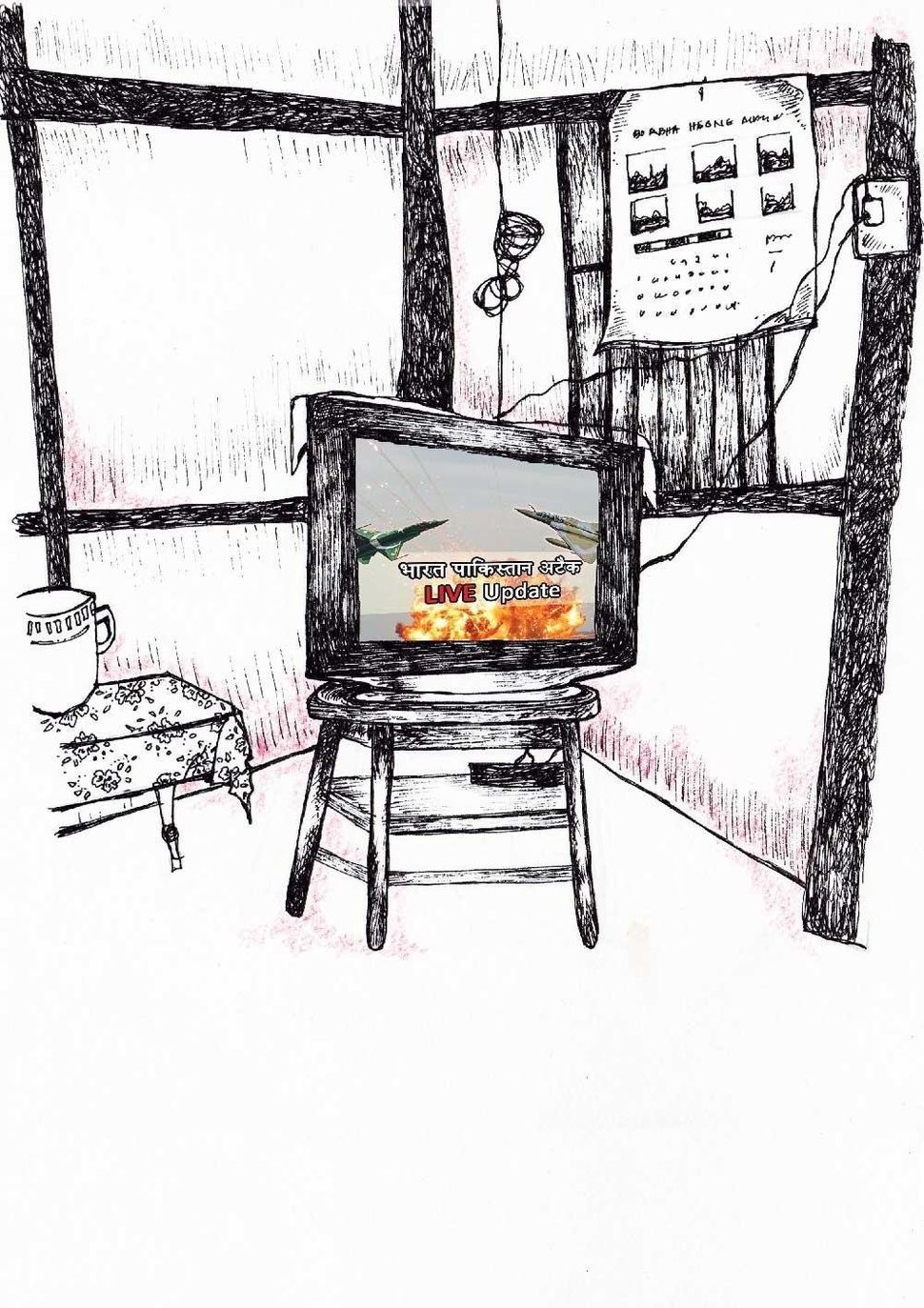
What does the news say, I ask Manoj.
Everything, he tells me. From footage of Indian planes on bombing runs to images of Pakistani planes being downed. It is worth noting that there is no publicly available “footage” of the Indian and Pakistani air forces bombing each other. In its absence, news channels have been mining their archives to manufacture entirely fictitious video narratives.
Sometimes the news they show on TV isn’t always what it looks like to us, Manoj explains.
And he tells me this story.
A few years ago, the river Saralbhanga in Kokrajhar was overflowing in the monsoons and there was no bridge, causing local people a lot of problems. This person from a news channel decided to do a news item.

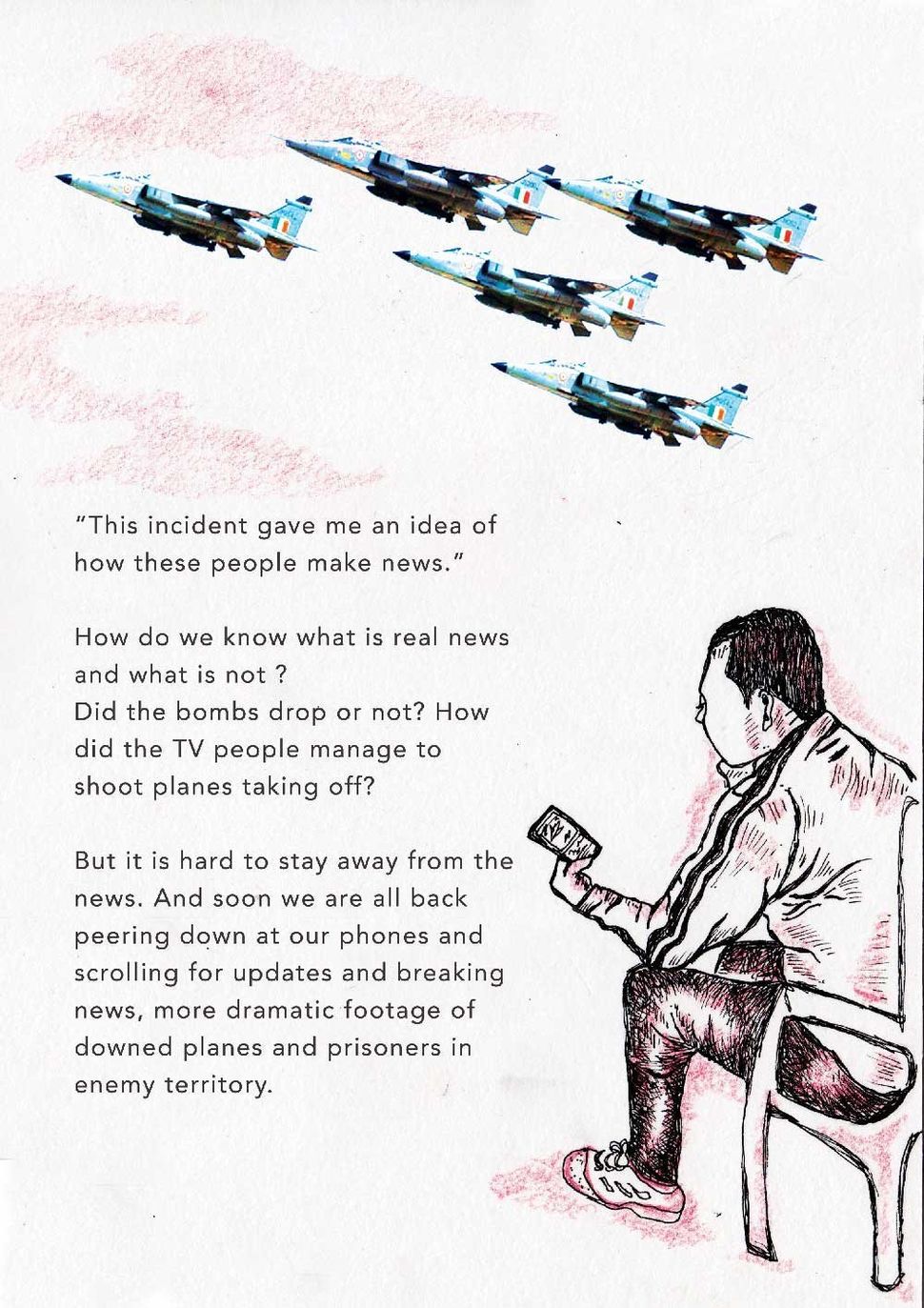
Design input from Joel Rodriguez.